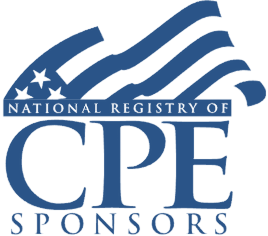Welcome! Save 30% on all CLE, CPE, and Professional Skills webinars, plus 15% off any annual pass with code HOLIDAY25
About the Course
Introduction
This course will provide counsel and tax professionals effective strategies and best practices for avoiding and handling state sales and use tax audits. The panel will offer their guidance current internal audits to identify items of concern and tactics to keep potential state audits on track and completed efficiently.
Description
States generally have a system for selecting taxpayers for audit and will use various methods in doing so--such as sales volume, nexus, the complexity of tax returns or specific events, such as bankruptcy, or implementing an online sales platform. Audits may also follow a state's change in the law.
Given that we are three years removed from states' adoption of economic nexus thresholds, and many states have begun to impose tax on online and digital sales, we are seeing and can expect to see a rise in sales tax audits, as a means of enforcing compliance with these changes.
A sales and use tax examination can be time-consuming, expensive, and devastating to the business. It can result in large assessments for uncollected sales tax, under-accrued use tax, interest, and penalties.
Tax professionals and advisers must emphasize effective methods for handling state sales and use tax audits, and more importantly, in identifying and controlling sales and use tax risk post-tax reform.
Listen as our panel discusses effective methods in conducting internal audits to identify risks, determine sales and use tax applicability, handle state audit examinations, and provide insight into state tax assessment concerns after tax reform.
Presented By

Mr. Dillon is an attorney and founder specializing in multistate sales and use tax matters for multistate and multinational businesses. For more than 25 years, as leader of his firm, practice leader for global accounting firms and in-house for two publicly traded E-commerce and Technology companies, Mr. Dillon has successfully helped companies identify multistate nexus, negotiate settlements of historical exposure, register and automate sales tax compliance processes, and address risk during M&A activity. He has successfully represented taxpayers in over 200 sales tax audits, and 500 Voluntry Disclosure Agreements (VDA), often coming in when “all hope is lost” to beneficially resolve the matter. Mr. Dillon is a member of the State and Local Tax Advisory Board for Strafford Publications. He is highly sought to lecture and author articles on sales tax matters for organizations such as AICPA, Strafford, BNA, CCH and the Center for Professional Education.

Mr. Endres works with business clients on a wide range of state and local tax issues, particularly involving New York state taxes, and also on matters involving federal and state tax credits and other incentives. He speaks frequently on New York State and multi-state tax topics.

Mr. Geiger works with the company's Tax Process Consulting Group and has more than 25 years of experience with income, sales and use and other taxes, with particular expertise in tax appeals, audit controversies and reverse audits. He also has experience with taxation of P-card purchases. In addition he has worked in tax compliance for corporations and for public accounting firms.
-
BARBRI is a NASBA CPE sponsor and this 110-minute webinar is accredited for 2.0 CPE credits.
Date + Time
- event
Thursday, March 24, 2022
- schedule
1:00 p.m. ET./10:00 a.m. PT
- Identifying and controlling sales and use tax risks
- Unanticipated sales and use tax exposure and effective due diligence
- Conducting an effective internal sales and use tax audit
- Maintaining deadlines, forms, letters, agreements, and transactions
- Practical tactics for handling state audits and assessments
The panel will review these and other key issues:
- Performing a risk assessment to identify sales and use tax exposure
- Effective due diligence and reducing the impact of unanticipated sales and use tax issues
- Methods in conducting an internal sales and use tax audit
- Developing policies and procedures in maintaining deadlines, forms, agreements, and transactions
Learning Objectives
After completing this course, you will be able to:
- Recognize the risks associated with state sales and use tax audits
- Determine the necessary methods in conducting internal audits
- Identify state sales and use tax issues stemming from tax reform
- Establish procedures in handling the state audit process
- Determine methods in maintaining required deadlines, forms, agreements, and other necessary items for audits
- Field of Study: Taxes
- Level of Knowledge: Intermediate
- Advance Preparation: None
- Teaching Method: Seminar/Lecture
- Delivery Method: Group-Internet (via computer)
- Attendance Monitoring Method: Attendance is monitored electronically via a participant's PIN and through a series of attendance verification prompts displayed throughout the program
- Prerequisite: Three years plus business or public firm experience at mid-level within the organization, preparing complex tax forms and schedules, supervising other preparers/accountants. Specific knowledge and understanding of practical guidance for conducting corporate audits, knowing how to avoid the most common and costly risk areas in sales and use tax audits; familiarity with how to prevent or resolve audit deficiencies.

BARBRI, Inc. is registered with the National Association of State Boards of Accountancy (NASBA) as a sponsor of continuing professional education on the National Registry of CPE Sponsors. State boards of Accountancy have final authority on the acceptance of individual courses for CPE Credits. Complaints regarding registered sponsons may be submitted to NASBA through its website: www.nasbaregistry.org.

BARBRI CE webinars-powered by Barbri-are backed by our 100% unconditional money-back guarantee: If you are not satisfied with any of our products, simply let us know and get a full refund. Contact us at 1-800-926-7926 .
Unlimited access to premium CLE courses:
- Annual access
- Available live and on-demand
- Best for attorneys and legal professionals
Unlimited access to premium CPE courses.:
- Annual access
- Available live and on-demand
- Best for CPAs and tax professionals
Unlimited access to premium CLE, CPE, Professional Skills and Practice-Ready courses.:
- Annual access
- Available live and on-demand
- Best for legal, accounting, and tax professionals
Unlimited access to Professional Skills and Practice-Ready courses:
- Annual access
- Available on-demand
- Best for new attorneys
Related Courses

State Tax Strategies for Athletes and Entertainers: Residency and SALT Deduction Limitations
Tuesday, January 6, 2026
1:00 p.m. ET./10:00 a.m. PT



